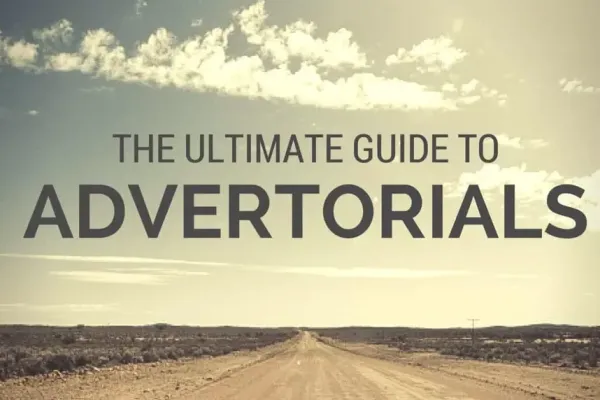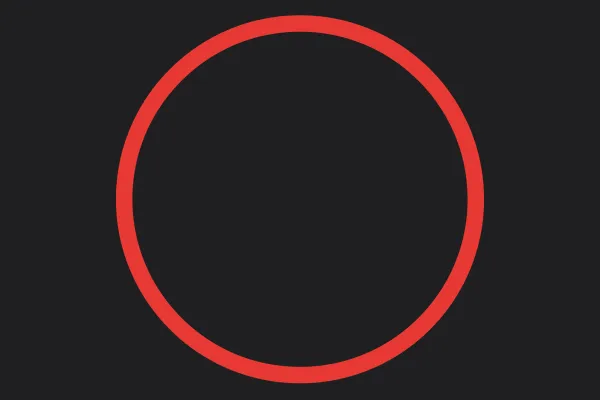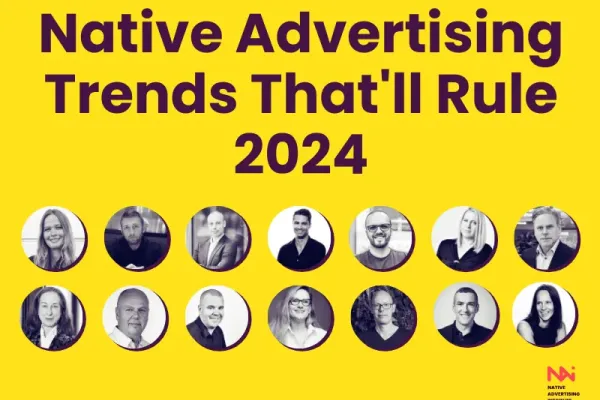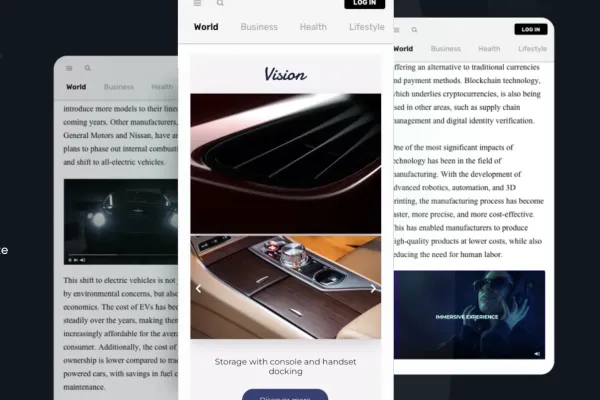Millennials are a very hard group to reach because they differ from all other targeting groups, said Rita Orschiedt, then Head of Branded Content at ze.tt, when we interviewed her at Native Advertising DAYS 2017.
But how are millennials different? Who are they? How do they interact with content online? And how do you succeed in reaching them with native content that actually interests them?
Rita Orschiedt gives you her best tips and tricks - and if you're in hurry, then scroll down to her 6 short takeaways on how to reach millennials.
First of all, they are always online but they are never available.
You can't fool them with marketing tricks
"Millennials are a very hard group to reach because they differ from all the other targeting groups.
First of all, they are always online but they are never available. That's one thing.
Then they are digital natives. So they are very used to communicate through social media. They're used to interaction and this is something many brands are not used to; that they have to interact with the millennials all the time. They are used to dialogue.
 Furthermore, they know every marketing trick. So it's very hard to reach them through classic advertising and native advertising can be a good way to actually reach them."
Furthermore, they know every marketing trick. So it's very hard to reach them through classic advertising and native advertising can be a good way to actually reach them."
You have to know exactly who you would like to address.
Find your niche millennials
"Millennials and Generation Y is the same thing. This makes it even more difficult because you can't reach a whole generation. You can't reach millennials as such.
You always have to find out whom you want to reach. You have to know exactly who you would like to address. Is it someone in their 20s on the countryside, having three kids, living in a house? Or is it a hipster in Berlin? Or is it someone from India?
Millennials are such a big group, you have to know who your millennials are and who the target group you want to reach actually is. You can't excuse that with wanting to reach a whole generation."
Find out who is on your platform and who is consuming your content and where.
Observe your millennials
"Even I can't reach the whole world of millennials.
In the beginning, I had to find out who our millennials at ze.tt were. I found out which topics they like, what they stand for.
I also observed the editorial team a lot because they know best how to reach millennials. Not only because they are millennials themselves but they write content and post stuff every day so they are the true experts.
RELATED: Why the Experts Believe Editorial Resources Are Crucial in Native Advertising
We also have to observe what the users' feedback is. So we can see how they respond to our topics, what they do on social media if there is negative or positive feedback. It's all about observing when you want to gain knowledge about who they are and what they want to read.
Then you're gonna find out the platform's DNA and what they like. You should also take a look at data and user statistics. Find out who is on your platform and who is consuming your content and where."
It's got a lot to do with timing, with added value, with creativity and as I said with interaction.
You have to go to bed with millennials
"It's not a surprise that 'the where' has a lot to do with social media. So, of course, we are analyzing how our millennials consume the content.
Firstly we have to see what content they like, who they are, and then how they actually consume it. In our case, 50% is social traffic.
The millennials come through Facebook and through Instagram to our content. Because nowadays they don't type in the URL anymore. They come through content directly. And 70% is mobile. So display ads have no chance in the case of millennials.
RELATED: 3 Data Myths That Native Advertisers Need to Stop Believing
We have to learn how the dynamics are on social media and how they consume it there, and what is important when we try to reach them where they are. It's got a lot to do with timing, with added value, with creativity and as I said with interaction.
You have to go as far as to go to bed with millennials which means that they are most active right after getting up and before going to sleep. So it's a lot about the right timing. What we did was firstly implementing an early shift because we saw that in the morning, content works much better than any time during the day - and also in the evening."
We have to post it when it is relevant for the millennials, not when we have time. This is a very important learning.
 Use a combination of timing and your brain
Use a combination of timing and your brain
"But a combination between timing and your own brain is really the best combination. Because if you have a topic like, say club life, in Berlin and any algorithm will tell you that most users are online on a Wednesday morning.
Still, no one is interested in that kind of topic on a Wednesday morning. It's all about timing. So you would post this type of content maybe on a Friday evening and it would have a lot more reach.
RELATED: T Brand Studio: 12 Tips for Creating Killer Content
Many brands say they are just posting content anytime during the day when they have time. And this is wrong. Because we have to post it when it is relevant for the millennials, not when we have time. This is a very important learning."
When I started at ze.tt, the only thing I did really for the first weeks was to read content the editorial team was publishing.
Understand your own platform
"It's fairly easy to say that you should create interesting content for millennials, but how do you gain this knowledge?
When I started at ze.tt, the only thing I did really for the first weeks was to read content the editorial team was publishing. I read every article at ze.tt, every post they had written. Just to get a glimpse of what interests millennials. Because how do you get this knowledge? You get this knowledge while reading what they read and by listening to the feedback.
In the very beginning, it's not just about selling your product, it's firstly really about getting an idea of whom you do that for and who is your editorial team? What does everyone stand for?
Because what native truly means for me is to assimilate to the platform, so you better know your platform. And you can only do that while observing what everyone does there."
You can't always be right from the start. So this testing is really a big key to success in every campaign
A/B testing is essential
"What makes a difference in our campaign and the performances of the campaign certainly is something like A/B testing.
We could just as well post something and then come to the advertising agencies and say after two weeks, 'Yeah, I'm sorry, it didn't work. Sorry, we tried one headline and one image and it just didn't work'. But this is absolutely not what we want.
So we do A/B testing.
We test several headlines and several images in order to find the best combination. Sometimes it's just a word in the headline which makes a huge difference in the performance. And when we find this perfect solution and we also have the best possible performance, only then we are distributing it on all channels.
Firstly, we publish it on ze.tt where we do lots of A/B testings. Then we publish it on social media and we know we already have the best solution. But maybe it doesn't work all the time on Facebook. Then we do another A/B test on Facebook.
You can't always be right from the start. So this testing is really a big key to success in every campaign."
If you want to do native advertising on a long-term, you have to make the millennials or the user group understand why the hell you do it.
Labelling is crucial
"Labelling also truly makes a difference for us. Because we don't want to fool millennials, we don't want to sneak in any native content and have a small grey label somewhere on the right bottom.
But we have a big orange label saying, 'Hey, that's a sponsored post. Just so you know, it's a sponsored post. If this has any added value for you, you can read it, but you know that this is an advertisement.'
We also put it on the Facebook teaser. We say 'Sponsored post' again, we don't only use the branded content function of Facebook.
 RELATED: Should We Have a Global Standard for Labelling Native Advertising?
RELATED: Should We Have a Global Standard for Labelling Native Advertising?
We also have an explanatory text on our website which says why we do native advertising and what it is and that we earn money with this.
Just to make it very transparent. Because if you want to do native advertising on a long-term, you have to make the millennials or the user group understand why the hell you do it. And why you're keeping the newsroom alive with what you do and why it is necessary.
Because they all use ad blockers, they are not financing our platform with that. More than 30 percent use ad blockers. So we have to come up with another idea to earn money for this editorial team and keep them alive. And through lots of dialogue, I think we made them understand why we do it and we got a lot more acceptance."
The 6 takeaways on how to reach millennials
"I came up with six things you can learn on how to reach millennials."
1. Get to know your millennials
"The first thing to do is to get to know your millennials. As I said, you cannot reach a whole generation, you should find your target group.
Find out who the millennials are that you want to reach and what interests them, what values and so on that there are."
2. Find out which platform works
"The second learning is to find out what works on your platform, content-wise. That means, see what the editorial team writes and also how the user or the target group reacts to that. And then get your learnings from it. Just try to find out the DNA."
RELATED: Native Advertising that Works? 3 Takeaways from Award-Winning Examples
3. Match millennials' needs with brands' goals
"Match Millennials' needs with brands' goals because that's something I didn't do right in the beginning, so that was a big learning.
Because, for example, if the company goal is the acquisition and you're writing the nicest stories you can, but you're not selling anything throughout the campaign, you didn't match the needs and the goals."
You cannot just make an intern sit there and be responsible for the most important channels you have.
4. Distribute wisely on all channels
"Distribute content wisely on all channels. That means to have a strategy for your social media. You cannot just make an intern sit there and be responsible for the most important channels you have.
Because we as millennials, we see through that and it's not working without any strategy. So every post has to have an added value. You can do that with a good creative teaser, with the right timing and with a lot of interaction.
Everything needs community management, it's not enough to just be on social media it's also very important what you do there."
 RELATED: Rita Orschiedt is featured in 100 Significant Women in Native Advertising 2018
RELATED: Rita Orschiedt is featured in 100 Significant Women in Native Advertising 2018
5. Treat millennials as equals
"The other very important learning is to treat Millennials as equals. Don't tell them what to do. This is a very paradox thing. Because they're searching for orientation in life, but you shouldn't tell them what to do.
What you always have to do is you have to try to find a tone to give a suggestion. And then you can give them the feeling that they can choose it on their own. But you cannot say, 'Please buy this' for whatever reason, or 'use this'. That's not how it works.
And this is also where this 'Authentic is a new professional' comes in. If you have an authentic story to tell, treat them as equals, tell them the story, share some experiences, then it'll work very well.
Because native content is not perfect yet. I see lots of very poor content online, to be honest. And there's still a lot of work to be done. This can't be it!
6. Be transparent and apply a moral standard
"The last point is to be transparent and apply a moral standard.
Being transparent, that's what I meant with labelling. But applying a moral standard is something which is very important to me. Not only in the discussion of millennials but in the discussion in general. As someone who works in quality media, yes, but again also for me personally.
Because native content is not perfect yet. I see lots of very poor content online, to be honest. And there's still a lot of work to be done. This can't be it! We have to do better somehow.
If we want to be a substitute for banner and display advertising, this is not all we got. We have to take responsibility for the content we are publishing.
For some, this sounds ridiculous in times of programmatic where you hardly control the content anymore. But we have to create great content if we want to do this for the next couple of years and if we want to be persuasive for the target group."
 By
By 





